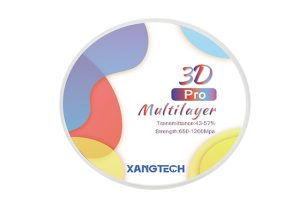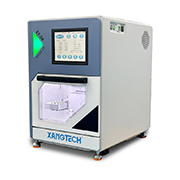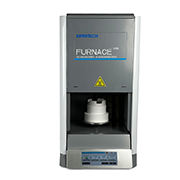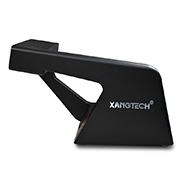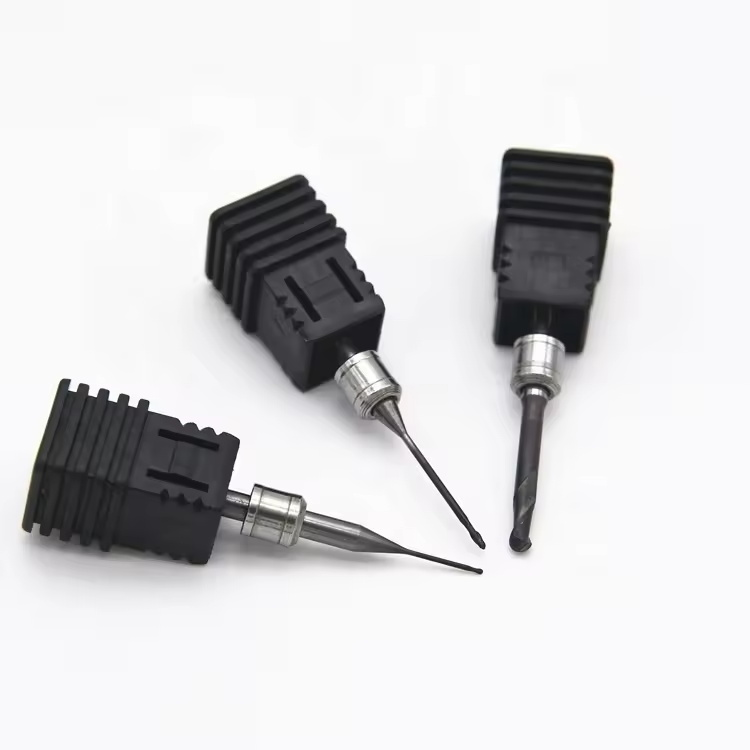Understanding CAD CAM Milling Burs
The Role of CAD CAM Milling Burs in Dentistry
In today’s digital age of dentistry, CAD CAM milling burs hold significant importance. These specialized instruments are vital for crafting accurate dental restorations like crowns, bridges, and implants. By leveraging computer-aided design (CAD) and computer-aided manufacturing (CAM), dental experts can achieve high levels of precision and efficiency in their procedures. The accuracy provided by these tools ensures that dental prosthetics fit better and offer more comfort, which directly enhances patient satisfaction and clinical outcomes.
Advanced milling burs enable dentists to handle a variety of materials, including zirconia, porcelain, and composite resins. It is well known that zirconia block is very strong and also very biocompatible. Their versatility allows for the execution of complex designs that would be difficult, if not impossible, with traditional manual methods. By relying on CAD CAM milling bur, dental laboratories can meet the growing demand for high-quality dental devices while maintaining consistency and reproducibility.


Key Attributes of High-Quality Milling Burs
The performance of a CAD CAM milling bur is largely dependent on several key attributes. Firstly, material hardness and wear resistance are crucial, as they determine the bur’s ability to withstand prolonged use without deteriorating. High-hardness materials such as tungsten carbide are often used for this purpose. Secondly, the sharpness and design of the cutting edges play a significant role in achieving fine, detailed results without causing undue stress to the material being milled.
Moreover, the dimensional accuracy and stability of milling burs are vital. Burs must maintain their shape and tolerance throughout their lifespan to ensure consistent performance. The integration of advanced features such as anti-vibration designs can also enhance the milling process by reducing tool chatter and improving surface finish. Lastly, the compatibility of milling burs with various machines and dental materials è essenziale per la loro ampia applicazione e adattabilità nei laboratori dentali.
Exploring Bur Coating Technology
Benefits of Advanced Coatings for Milling Burs
Increased Durability and Longevity
The application of coatings to CAD CAM milling burs significantly prolongs their lifespan by offering a protective layer against wear and corrosion. Advanced coatings, such as Diamond-Like Carbon (DLC) and Titanium Nitride (TiN), improve the hardness and durability of the burs. This enhancement allows them to retain their cutting efficiency for more extended periods. Consequently, this leads to fewer replacements, which reduces both operational costs and downtime for dental laboratories.
Durable coatings also improve resistance against harsh environmental conditions and the abrasive nature of dental materials. This means that milling burs can consistently produce high-quality restorations without a notable decline in performance. For instance, Nanyang Liandong Biotechnology Co., Ltd., known for its dental products, highlights how their coated burs exhibit excellent performance and longevity, even after extensive use.
Enhanced Precision and Performance
Coatings not only prolong the life of CAD CAM milling bur but also enhance their precision and cutting performance. A coated bur experiences reduced friction during milling, leading to smoother and more accurate cuts. This precision is crucial in creating intricately detailed dental restorations that fit perfectly with minimal post-processing adjustments.
La riduzione dell'attrito si traduce anche in una minore generazione di calore, che altrimenti può portare a danni materiali e compromessa integrità strutturale della protesi dentale. Utilizzando rivestimenti avanzati, i laboratori dentali possono ottenere risultati superiori, garantendo che i restauri siano durabili ed esteticamente piacevoli. DentalXangtech, ad esempio, sottolinea l'importanza dell'uso di borse rivestite di alta qualità per raggiungere una notevole precisione e affidabilità nella fabbricazione del restauro dentale.
Types of Coatings for Milling Burs

Rivestimenti in carbonio simile al diamante (DLC)
I rivestimenti Diamond-Like Carbon (DLC) sono famosi per la loro eccezionale durezza e le caratteristiche di basso attrito. Quando questi rivestimenti vengono applicati a una fresatrice CAD CAM, producono una superficie altamente resistente all'usura. I rivestimenti DLC emulano molte delle proprietà presenti nel diamante naturale, offrendo ai burs un livello di durezza in grado di sopportare i rigori della fresatura di materiali dentali più duri, come la zirconia.
In addition to their durability, DLC coatings reduce the adhesion of material residues to the burs, ensuring cleaner operations and easier maintenance. This enhances the overall milling quality and efficiency, allowing dental professionals to achieve optimal results with less effort. Companies like Nanyang Liandong Biotechnology Co., Ltd. have successfully incorporated DLC coatings into their burs, resulting in superior performance and longer tool life.
Titanium Nitride (TiN) Coatings
Titanium Nitride (TiN) coatings are another popular choice for enhancing the performance of CAD CAM milling bur. Known for their golden hue and impressive hardness, TiN coatings provide robust protection against wear and oxidation. Burs coated with TiN exhibit increased stability and a reduced tendency to dull, which is essential for maintaining consistent cutting precision.
Uno dei vantaggi significativi dei rivestimenti TiN è la loro biocompatibilità, rendendoli ideali per l'uso in applicazioni mediche e dentali. Lo strato di TiN funge da barriera, impedendo agli ioni metallici di lixiviarsi nel materiale circostante, che è vitale per mantenere l'integrità e la sicurezza dei restauri dentali. DentalXangtech mette in evidenza l'efficacia dei rivestimenti TiN nella loro gamma di prodotti, sottolineando l'importanza dell'utilizzo di rivestimenti avanzati per ottenere risultati dentali di alta qualità.
Incorporando questi rivestimenti innovativi nelle borse di fresatura CAD CAM, gli esperti dentali possono sperimentare una lunga vita degli utensili, una precisione superiore e una funzionalità complessivamente migliorata delle loro attrezzature. Questo non solo semplifica il processo di fresatura, ma garantisce anche che i pazienti ricevano restaurazioni dentali robuste e meticolosamente realizzate.
Innovazioni di DentalXangTech nel rivestimento Bur

Panoramica di Nanyang Liandong Biotechnology Co., Ltd.
Nanyang Liandong Biotechnology Co., Ltd. è un'entità di buona reputazione nel settore dentale, conosciuta per i suoi progressi innovativi in strumenti e materiali dentali. Con una forte attenzione alla ricerca e allo sviluppo, l'azienda si sforza di migliorare la qualità e le prestazioni degli strumenti di ripristino dentale. Il loro impegno per l'eccellenza ha portato allo sviluppo e all'implementazione di tecnologie all'avanguardia nella loro gamma di prodotti, tra cui la fresatrice CAD CAM. Questa dedizione all'innovazione garantisce che i loro strumenti soddisfino le esigenze in evoluzione dei professionisti dentali, fornendo risultati superiori e una migliore cura del paziente.
Spotlight su XANGTECH’ s Gamma di prodotti
Introduzione alla loro collezione di borse da fresa
XANGTECH’ La collezione di borse di fresatura dentale s è progettata per soddisfare le esigenze dei moderni laboratori dentali. Queste borse sono disponibili in varie forme e dimensioni, ciascuna su misura per applicazioni specifiche nel restauro dentale. La collezione comprende borse adatte per la fresatura di una vasta gamma di materiali, dallo zirconio alle resine composite, garantendo che i dentisti possano trovare lo strumento giusto per ogni compito. Incorporando caratteristiche avanzate e materiali di alta qualità, le borse di fresatura di XANGTECH offrono prestazioni e durata eccezionali.
Tecnologie di rivestimento all'avanguardia utilizzate
Le tecnologie di rivestimento impiegate da XANGTECH sono all'avanguardia nel migliorare le prestazioni della fresatura. Questi rivestimenti avanzati, come il carbonio simile al diamante (DLC) e il nitruro di titanio (TiN), forniscono vantaggi significativi che includono una maggiore durata, una maggiore precisione di taglio e una migliore resistenza all'usura e alla corrosione. Riducendo l'attrito e la generazione di calore durante la fresatura, questi rivestimenti aiutano a mantenere l'integrità strutturale dei materiali dentali e garantiscono tagli precisi e puliti. L'applicazione di questi rivestimenti da parte di XANGTECH riflette il loro impegno a fornire strumenti di alta qualità e affidabili che elevano gli standard del restauro dentale.
Consigli di applicazione e manutenzione per risultati ottimali
Migliori pratiche per l'uso di borse di fresatura CAD CAM
Per ottenere i migliori risultati quando si utilizza una fresatrice CAD CAM, è essenziale seguire le migliori pratiche. Prima di tutto, assicurarsi sempre che il bur sia correttamente installato e serrato in modo sicuro nel dentale milling machineCiò impedisce qualsiasi oscillazione o scivolamento che potrebbe compromettere la precisione del processo di fresatura. Inoltre, la scelta del bur appropriato per il materiale da fresare è cruciale. Utilizzando il bur giusto per materiali specifici come zirconia o porcellana non solo migliora il risultato, ma prolunga anche la durata della bur. Per ottenere risultati ottimali quando si utilizza una borsa di fresatura CAD CAM, è fondamentale rispettare le migliori pratiche. Inizialmente, è fondamentale verificare che il bur sia correttamente installato e saldamente fissato all'interno della fresatrice. Questa misura elimina qualsiasi potenziale di oscillazione o scivolamento che potrebbe influire sulla precisione della fresatura. Inoltre, la scelta di una borsa adatta al materiale specifico da lavorare è essenziale. L'impiego di un bur appropriato per materiali come zirconia o porcellana non solo migliora il prodotto finale ma estende anche la durata del bur.
L'ispezione regolare delle borse per eventuali segni di usura o danno è un'altra pratica chiave. I burs usurati o noiosi possono portare a risultati di fresatura scarsi e potenzialmente danneggiare il restauro dentale che viene creato. Sostituire le borse prima che diventino eccessivamente usurate garantisce qualità e precisione costanti. Infine, l’attenzione alle raccomandazioni del produttore in materia di velocità e velocità di alimentazione può ottimizzare le prestazioni di fresatura, riducendo lo stress sul bur e migliorando l’efficienza complessiva.
Manutenzione e cura per una vita prolungata ed efficienza

Una corretta manutenzione e cura sono fondamentali per garantire la durata e l'efficienza prolungate di una fresatrice CAD CAM. Dopo ogni utilizzo, le borse devono essere pulite con attenzione per rimuovere eventuali detriti o residui che potrebbero influenzare le loro prestazioni. I detergenti a ultrasuoni possono essere particolarmente efficaci nel raggiungere le zone complesse delle borse, garantendo una pulizia accurata. Inoltre, adeguate pratiche di stoccaggio, come mantenere le borse in un ambiente pulito e secco, possono prevenire la ruggine e la corrosione.
Regular lubrication of moving parts in the milling machine, as recommended by the manufacturer, can also prolong the life of the burs by reducing friction and wear. Keeping the machine well-maintained ensures smooth operation and consistent milling quality. Furthermore, periodic calibration of the milling machine helps maintain the precise alignment and operation, which is critical when working with highly detailed dental restorations. By following these maintenance tips, dental professionals can maximize the efficiency and lifespan of their milling burs, ensuring high-quality results and cost-effective operations.
Comparative Analysis of Different Product Offerings
Key Differences Between Various Types of Burs and Coatings
The CAD CAM milling bur market provides a diverse range of products, tailored with unique materials and coatings to fulfill various dental milling requirements.
Detailed Comparison Table
| Caratteristiche | Burs di carburo di tungsteno | Diamond-Like Carbon (DLC) Coated Burs | Burs rivestite di nitruro di titanio (TiN) |
| Hardness | High | Molto Alto | High |
| Riduzione dell'attrito | Moderate | Excellent | Buono |
| Wear Resistance | High | Excellent | Molto Alto |
| Heat Generation | Moderate | Basso | Basso |
| Surface Finish Quality | Buono | Excellent | Very Good |
| Biocompatibilità | Moderate | High | Molto Alto |
| Suitable Materials | Zirconia, porcelain | Zirconia, composite resins, porcelain | Zirconia, leghe metalliche, resine composite |
The above table highlights some of the primary differences between milling burs with different coatings. Among them, Diamond-Like Carbon (DLC) and Titanium Nitride (TiN) coatings stand out for their wear resistance, friction reduction, and overall performance in producing high-quality dental restorations. Tungsten carbide burs, while offering good performance, may not match the advanced capabilities provided by coated burs, thus these options can be selected based on specific dental laboratory needs.
Tendenze future nella tecnologia di fresatura CAD CAM

Innovazioni in evoluzione da prestare attenzione
The field of CAD CAM milling bur technology is on the verge of several promising advancements. One notable trend is the development of hybrid coatings that combine the benefits of existing materials, aiming to deliver enhanced durability, precision, and biocompatibility. These innovative coatings are expected to push the boundaries of what is currently achievable, providing dental professionals with tools that maintain performance over extended periods.
Additionally, there is a growing interest in the integration of smart sensors within milling burs. These sensors could monitor wear levels and provide real-time feedback, enabling dental labs to optimize tool usage and replace burs before they become inefficient. Such advancements could greatly improve operational efficiency and reduce costs.
Industry Predictions and Potential Developments
Considering future advancements, the CAD CAM milling bur sector stands to gain from continuous research and development in nanotechnology. Implementing nanoparticles in coating formulations may yield more durable and efficient milling tools. These nanoparticles have the potential to improve scratch resistance and minimize wear, thereby prolonging the lifespan of the burs.
Furthermore, the industry is expected to see a broader adoption of AI and machine learning technologies. These technologies can analyze vast amounts of data to predict tool wear and performance trends, enabling proactive maintenance and reducing downtime. Dentalxangtech, as an industry leader, is likely to be at the forefront of these developments, incorporating the latest technologies to continuously improve their product offerings.
Innovation in the CAD CAM milling bur sector is also likely to be influenced by the increasing demand for personalized dental care. Customizable milling burs that cater to specific patient needs could become a norm, driven by advances in 3D printing technology. This personalized approach ensures that each dental restoration is tailored for optimum fit and comfort, enhancing patient outcomes.
By staying abreast of these trends and embracing new technologies, dental laboratories can ensure they are equipped with the most advanced tools available, leading to superior results in dental restoration and patient satisfaction.

